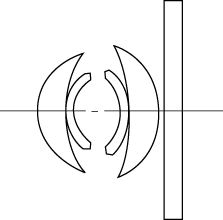largedrink
Down Under
I was lucky to purchase a nice example of the 25mm Canon f3.5 LTM lens last week, along with the accessory viewfinder, both with their leather cases. I am looking forward to using them on my Canon P but there are a couple of things I'd like to fix first and hoping the forum can help.
Firstly, the lens is very clean but there are traces of fungus behind the front element that I would like to clean. Can anyone advise the easiest way to access the front element on this lens? I am familiar with dismantling other lenses from the front, and want to make a sure I follow the correct procedure with this one.
I managed to dismantle the viewfinder and clean it throughout, it's very clear now. It's exactly the same as the example shown for sale at this link: https://sunrise-camera.com/product/canon-25mm-f3-5-w-28mm-finder-leica-ltm-l39/
But with mine there are a couple of missing screws on the base. When looking from underneath it's missing the shiny silver ball-shaped screw that is forward of the brass-coloured screw under the accessory shoe (see photo 4/8 in the link above). And when viewed from the side (photo 3/8 in the link above) it's missing the rear screw that goes across the pivot to the other side of the shoe.
It still mounts correctly, and it pivots in both directions (forwards and backwards). I'd like to know whether I need to replace these items? I understand that this model has auto-parallax correction with the V-series Canon rangefinders, but with my Canon P I intend to use a Canon Finder-Coupler to compensate for parallax manually. Hoping I can get away without needing further repairs to use it accurately with the finder-coupler.
Thanks for any advice and also more than happy to see examples of photos with this lens.
Firstly, the lens is very clean but there are traces of fungus behind the front element that I would like to clean. Can anyone advise the easiest way to access the front element on this lens? I am familiar with dismantling other lenses from the front, and want to make a sure I follow the correct procedure with this one.
I managed to dismantle the viewfinder and clean it throughout, it's very clear now. It's exactly the same as the example shown for sale at this link: https://sunrise-camera.com/product/canon-25mm-f3-5-w-28mm-finder-leica-ltm-l39/
But with mine there are a couple of missing screws on the base. When looking from underneath it's missing the shiny silver ball-shaped screw that is forward of the brass-coloured screw under the accessory shoe (see photo 4/8 in the link above). And when viewed from the side (photo 3/8 in the link above) it's missing the rear screw that goes across the pivot to the other side of the shoe.
It still mounts correctly, and it pivots in both directions (forwards and backwards). I'd like to know whether I need to replace these items? I understand that this model has auto-parallax correction with the V-series Canon rangefinders, but with my Canon P I intend to use a Canon Finder-Coupler to compensate for parallax manually. Hoping I can get away without needing further repairs to use it accurately with the finder-coupler.
Thanks for any advice and also more than happy to see examples of photos with this lens.






